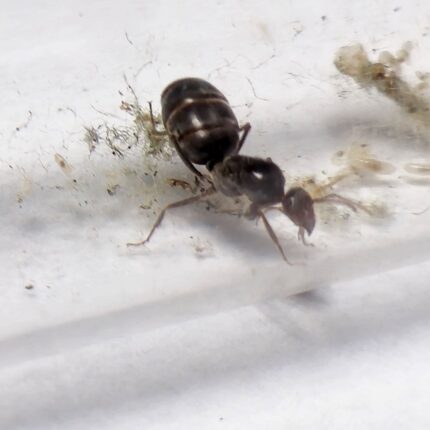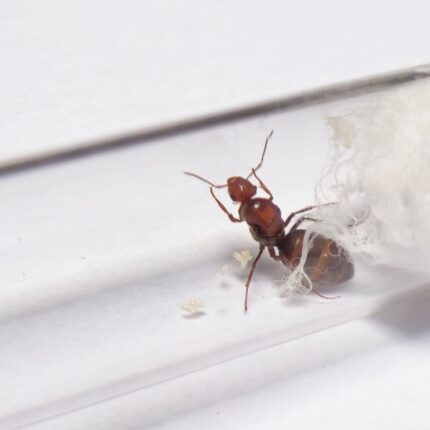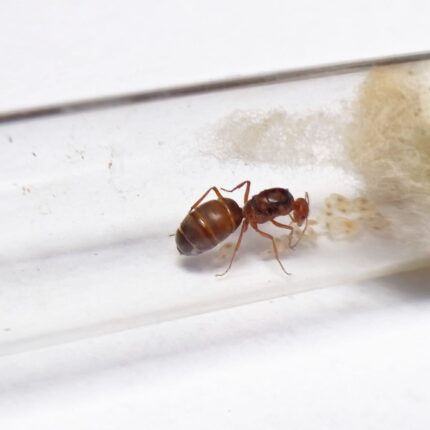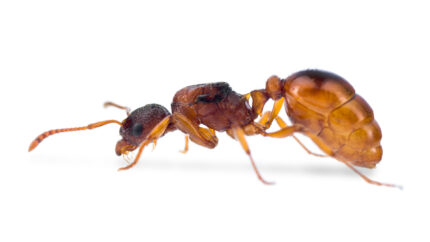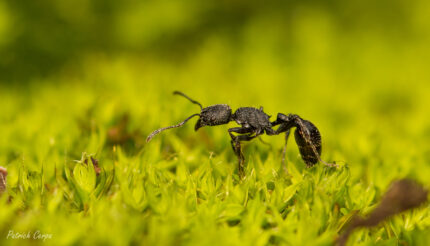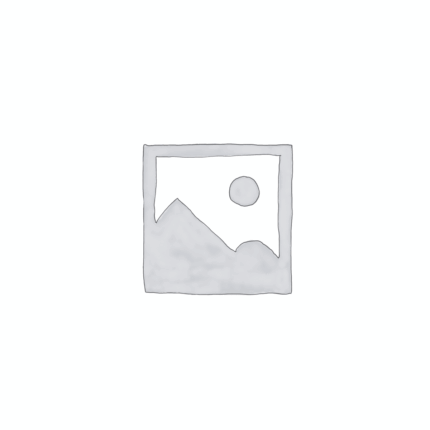Myrmecocystus flaviceps
549,90 zł – 869,90 złMyrmecocystus flaviceps is a monogynous ant species with a medium development rate. The queen measures 11–12 mm, while the workers range from 4–8 mm. They typically display a reddish head and thorax with a darker gaster. This species is known for its honey pot workers (repletes), which store liquid food in their distended abdomens.
They feed on insects, syrups, fruits, vegetables, and protein-rich foods. Humidity should be maintained at 40–60% in the arena and 50–70% in the nest, while the temperature should remain between 23–30 °C in the arena and 22–26 °C in the nest.
Myrmecocystus kennedyi
549,90 zł – 869,90 złMyrmecocystus kennedyi is a monogynous ant species with colonies reaching up to 5,000–8,000 workers. They develop at a moderate pace. The queen measures approximately 12–14 mm in length, while workers range from 4.5 to 7 mm. Their body is typically light to reddish-brown, with a slightly darker gaster, and they have a somewhat glossy appearance. As with other species in the genus, repletes (specialized workers that store food) may be present in mature colonies. Their diet consists of insect prey, sweet substances like nectar or syrup, fruit, jelly, and protein-rich foods such as cooked egg or chicken.
Myrmecocystus mimicus
589,90 zł – 949,90 złMyrmecocystus mimicus is a polygynous colony of ants with a medium development rate. The queen is 10-12mm in size, while the workers are 4-8mm. They have a red head and black body. They feed on food insects, fruits, vegetables, and seeds. The humidity in their arena should be 50-70% and in their nest 70-90%. The temperature should be regulated accordingly.
Myrmecocystus wheeleri
549,90 zł – 869,90 złMyrmecocystus wheeleri is a monogynous ant species with colonies reaching up to 6,000–10,000 workers. They exhibit a moderate development speed. Queens measure approximately 12–14 mm in length, while workers range from 4.5 to 7 mm. Their coloration is generally light to reddish-brown, with a darker, often slightly translucent gaster. Like other species in the genus, they may develop repletes—workers specialized in storing liquid food. Their diet includes small insects, sugary liquids like nectar or syrup, fruits, jelly, and protein-rich foods such as cooked chicken or egg.ir diet includes small insects, sugary liquids like nectar or syrup, fruits, jelly, and protein-rich foods such as cooked chicken or egg.
Myrmica rubra
49,90 zł – 189,90 złMyrmica rubra is an aggressive, fast-moving species perfect for experienced antkeepers. Its high colony growth, polygyne structure, and active foraging behavior make it exciting to observe. Best suited for those prepared for regular maintenance and who enjoy a more challenging species with real fire-ant personality.
Patagonomyrmex angustus
589,90 zł – 999,90 złPatagonomyrmex angustus polygynous ant colony, with colony size usually under 400 workers, rarely exceeding that size in natural nests
Size: Queens: ~7-9 mm, Workers: ~4–6 mm
Temnothorax unifasciatus
59,90 zł – 99,90 złTemnothorax unifasciatus is a tiny, peaceful species forming small colonies in acorns or rock cracks. Best suited for natural-style micro formicaria and hobbyists who enjoy detailed ant behavior on a miniature scale.


